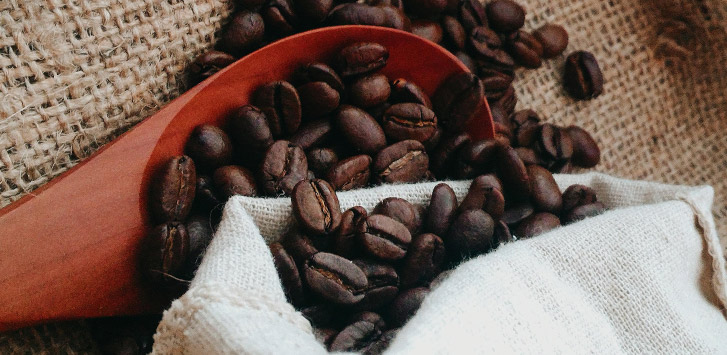
Inflation is an inevitable part of economics, and experts have debated it for what seems like forever. Economists and businessmen alike argue in favor of inflation because without it, our economy would become stagnant and ultimately suffer. For the everyday consumer, however, inflation can be a confusing menace––after all, it lowers the value of our dollar and increases our prices. However, compromising is a part of life––the ordinary Joe takes the good with the bad.
Inflation may not seem like something that affects your everyday life until it does. For example, the coffee you drink every morning–– the cup that keeps you perky and ready to seize the workday––is subject to the whims of inflation, and paying more for something (especially a necessity) is something no one is eager to do.
Since 1969, coffee prices have been unstable––sometimes low for a while, sometimes high, then a zig-zag formation here and there. At first, to the everyday consumer, the price of coffee seems like a simple, small number; but there are a lot of figures and factors that go into the final dollar amount, making the price as complex as the coffee flavors themselves––that’s why we’ll discuss it in depth in its own post!
In a nutshell, there’s the price of the actual coffee itself, and then there’s the price of the C Market, or the worldwide exchange in which coffee is purchased and sold (also called Centrals Market). Combine the coffee, the c market, import fees, containers, and coffee differentials, and you have a more accurate figure. For example, in 1985, the cost of coffee was approximately $1.14 per pound, give or take a few cents, and the C Market was a little further ahead at $1.46. This combined makes an approximate price of $2.60. When we adjust for inflation or use the dollar’s current value, today’s price would translate to just under $5!
One year later? A whopping average total of $3.68, or $5.12 in today’s dollars. That’s higher than coffee is in 2022, which totals around $4.71.
Is there any good news here? Yep! In 1989 the total price dropped back down to $2.42––practically full circle within a four-year time span. These figures handsomely illustrate the roller coaster ride our coffee prices take every few years.
But can these ups and downs stimulate the economy? As with many aspects of life, anything in excess can be bad news, but at the same time, a little can also go a long way. The same mantra applies to our economy: little to moderate inflation can drive just the right amount of consumption. Every time you buy groceries (or anything, really) as a consumer, you contribute to your economy’s consumption, which in turn determines the economy’s success––more jobs, more income, and more services for people. You can purchase a single cup of coffee at your favorite cafe––food service––or you can curate your own unique concoctions at home using materials you’ve bought in a more extensive supply––retail.
Then, there are other factors, like panic-buying, or when customers buy goods at such a high and rapid volume that ultimately causes future prices to increase. Any event––local or national––can potentially induce panic-buying, and the pandemic immediately comes to mind for most of us. There was a demand spike for all types of groceries during the height of the pandemic––paper, sugars, milk, dairy, soft drinks, pet food, meat, and of course, coffee.
On the other side of the coin, the pandemic’s effect on the supply chain took a harsh hit––volatile labor shortages and shipping issues prevented more products from hitting the shelves to keep up with the demand. There are necessary protocols to follow––if a worker is sick or exposed, the entire operation has to shut down because their workstations are so close together it could potentially spread the virus further and further to scarier heights. This causes stores’ orders to become delayed and even canceled due to factory lines and packaging companies being shut down for weeks and logistics companies unable to ship finished products.
Re-calibration is necessary for things to return to normalcy, but it could take weeks or months. In the meantime, stores hunt for ways to help their consumers save money and reduce waste––coupons, specials, and loyalty programs to name a few. However, they can only do so much against an inevitable force.
The coffee industry rubs shoulders with more facilities and companies than you may think––from suppliers, processors, and coffee farmers to stores, roasting houses, and cafes. Unbelievably, this all circles back to the latte you enjoy every morning or the frappuccino from your favorite shop.
Our beloved beans take a long, arduously-fascinating journey to your cup, and there are opportunities for obstacles along any step of the way––but is there one huge factor that can directly affect the price of green coffee in its most important and vulnerable stage? When your latte is a seed sprouting in soil, the most powerful and oftentimes unpredictable force ultimately affects its final price on the shelf––join us in the next post when we talk about the weather!